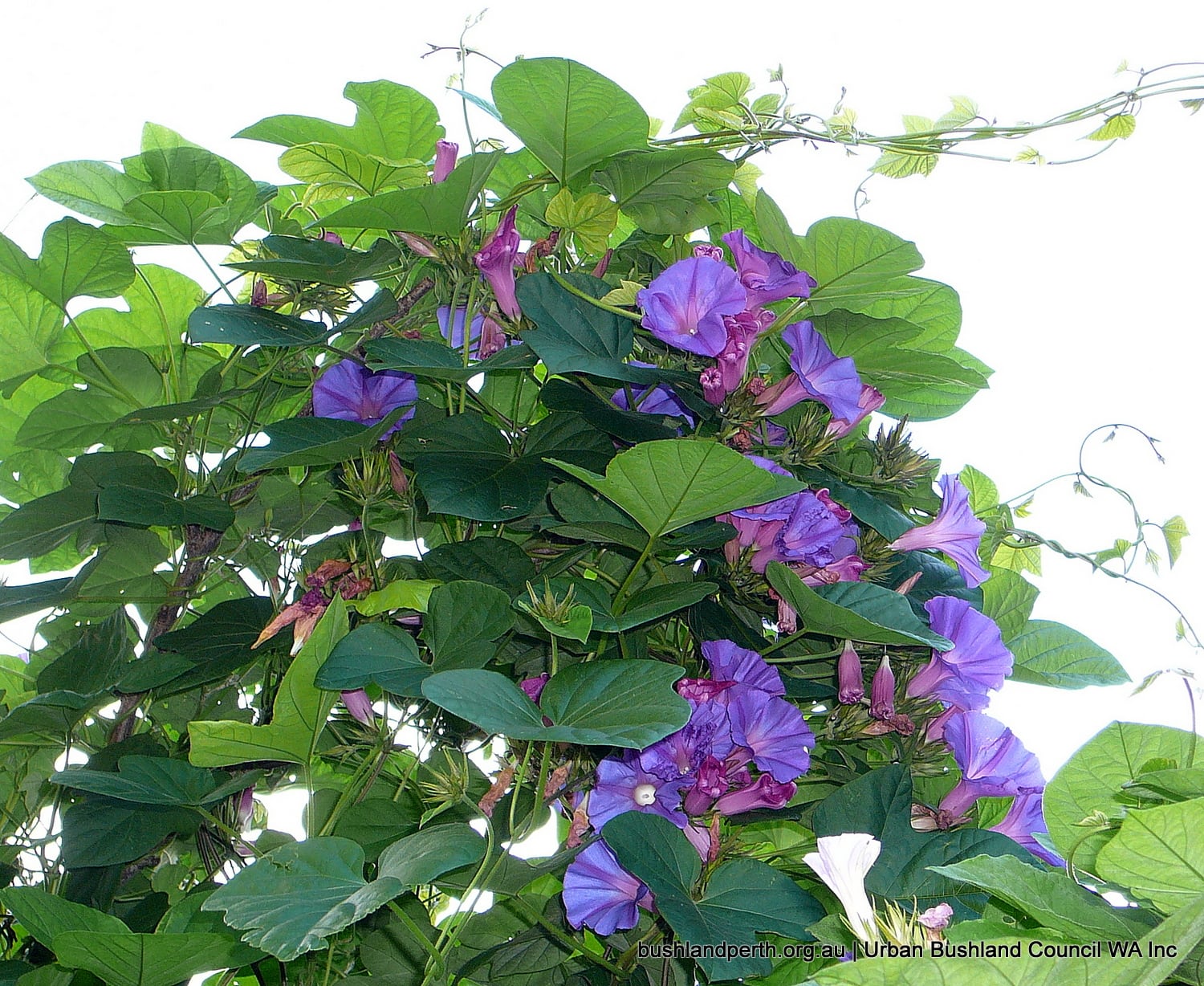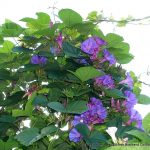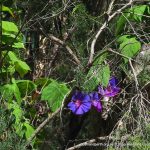Morning Glory

Common name
Morning Glory
Scientific Name
Ipomoea indica
Type of plant
Uncategorised
About this weed
Morning Glory is similar to Coast Morning Glory but is easily distinguished by its soft hairy appearance and its trilobed leaves. A native of India, tropical Asia, tropical Central and South America it was introduced as a garden plant. It is now a serious problem in bushland.
Description
This weed is a twining, scandent, climber and produces masses of purple flowers in spring and summer. Still grown in gardens it has now naturalised. Reproduction is by stolons, stem fragmentation and rooting, and seeds are dispersed by water, garden refuse, animals and machinery. The time to first flowering is 1-2 years. It is suspected to be toxic to livestock and humans.
Impact on Bushland
This rampant twining weed is capable of smothering all vegetation. Along creeks and rivers it smothers fringing trees.
Location
Locally seen on wastelands from Geraldton to Albany. It is common along rivers and creeklines in the Perth area.
Priority for removal
High: causes acute disruption of ecological processes, dominates and/or significantly alters vegetation structure, composition and function of ecosystems.
Management (hand)
Hand remove all stems in contact with the ground, sever vines at base and leave to dry in canopy then dig out roots. Slashed stems can resprout.
Management (herbicide)
Scrape and paint stem with 20-50% Glyphosate or alternatively, cut vine at chest height and lay lower sections on the ground before applying 1.5 % Glyphosate over them. Monitor for 1 year following removal. Read the manufacturers’ labels and material safety data sheets before using herbicides.
Flowering month/s
January, February, September, October, November, December
Flower colour/s
Blue, Purple
Information source
https://florabase.dpaw.wa.gov.au/browse/profile/6630
Additional information
https://florabase.dpaw.wa.gov.au/weeds/swanweeds/
Hussey, B.M.J., Keighery, G.J., Dodd, J., Lloyd, S.G. and Cousens, R.D. (2007) Western weeds. A guide to the weeds of Western Australia, Second Edition, The Weeds Society of Western Australia, Victoria Park, Western Australia.


